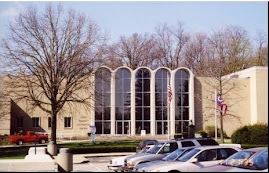He arrived this afternoon and we have already installed him in his new home in the Blacksmith Shop! He was made by Dorfman Museum Figures.
Donations to our annual Captial & Replacement fund drive made it possible for us to purchase another realistic figure to add to our growing group of residents in the Street! We now have a Doctor and Little Girl, a Dentist and Little Boy, and a Blacksmith.
Which one do you think we should add next?
Here are some more images:
Th lighting is a challenge in that space, so I also took a video to try to capture the red glow from the fire reflecting on his shirt:
The following is the text of the audio tour buttons that were installed in the Street of Shops in 2012. Ron Ponder recorded these for us. There are also hammering and bellows sounds in the scripts.
Button #1 – A Key
Figure in Town
Since the first European settlers landed in Roanoke,
Virginia in 1607, the blacksmith has been an essential part of life in every
American town. He would make everything
out of iron that a household, farm or business needed, including horseshoes,
pots, skillets, tools, and weapons.
It might be surprising to learn that making nails and
fasteners of every size and type was a major part of the blacksmith’s work. These small but necessary pieces were so
valuable, abandoned buildings were often burned to the ground, just to salvage
the nails.
Button #2 – African
American Blacksmiths
In the South, large plantations were often isolated and had
to be self-sufficient when it came time to re-shoe a horse or repair
agricultural equipment. A few slaves
were given a rare opportunity to learn an important skill. After the Civil War, African Americans
migrating north found work in many communities as a blacksmith.
Button #3 – The
Bellows
The design of the bellows is ancient and quite
ingenious. It consists of a lower and
upper chamber, connected by a one-way valve.
A few vigorous strokes of the operating pole forces air from the lower
chamber into the upper chamber, which is connected to the firebox through a
tube. Because the opening of the tube is
smaller than the tube itself, the air passes slowly into the firebox, providing
a steady stream of oxygen to fuel the fire.
A blacksmith could work for a considerable amount of time before he
needed to pump the bellows again. The forge on display in our Blacksmith Shop was used by the
Flowers Welding Company in Canton. Most
of the tools date to the 19th century, although the same kinds of
tools have been used for hundreds of years.








No comments:
Post a Comment